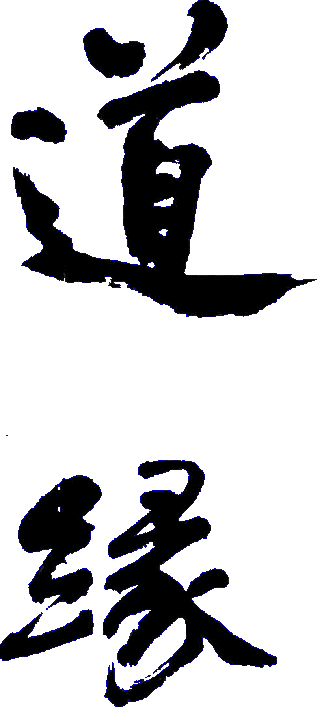Courses and training in qigong from the Daoist and Buddhist traditions
~ The school of Grandmaster Guo Bingsen ~
Teacher: Edith Guba
Nei Jing Gong
"To this day, Nei Jing Gong is the most powerful Qigong I have ever encountered in China."
Thus Guo Bingsen, the now over 90-year-old Grandmaster of Qigong, on the occasion of a telephone conversation with Edith Guba in May 2018. It should be added that in his cooperation with the Dalian Qigong Society, Guo Bingsen was entrusted with assessing the Qigong of masters who were new to Dalian and wanted to offer courses to the public for its quality in preliminary events in small circles.
Nei Jing Gong comes from the Buddhist tradition. It is attributed to Da Mo (the Indian monk Bodhidharma), who came from Bhutan to China and is renowned for meditating facing a wall for nine years to attain enlightenment. Da Mo is said to have passed on this form of qigong to the monks in the Shaolin monastery.
Nei Jing Gong has three parts and can lead to mastery in qigong. Regular practice of Nei Jing Gong develops the ability to send out qi effectively. It also develops latent potentials.
Nei Jing Gong is practised standing. The fingers move in different ways in each exercise, activating the circulation of qi in the meridians which end or begin in the fingers. The order of finger movements produces different energetic results.
In their beginning stages all forms of qigong improve the health of the practitioner - further aims can only be attained with the foundation of good health. Nei Jing Gong 1 stabilises and strengthens the physical condition.
Nei Jing Gong 2 works with the quantity of qi accumulated in the body. It is also practised standing as in Nei Jing Gong 1. Nei Jing Gong 2 develops the quantity of available qi in differing modifications. Just as in Nei Jing Gong 1, the exercises are practised standing. Unlike Nei Jing Gong 1, in which the exercises are all practised in a stance with the feet shoulder-width apart, you find many different basic postures in Nei Jing Gong 2. Each of these exercises has specific finger movements and develops different possibilities of emitting qi, each one building upon the last in a logical way.
Nei Jing Gong 3 refines the quality of emitted qi.
Nei Jing Gong is at the core of the qigong training at the Dao Yuan School. The theoretical fundamentals of Chinese philosophy are also introduced in these courses, as well as several applications of the abilities developed by the practice of Nei Jing Gong.
The practice of Nei Jing Gong 2 in its entirety is obligatory for gaining permission to teach Fan Teng Gong and other forms of qigong from the Dao Yuan School. People in therapeutic and medical professions, in particular doctors of Chinese medicine, can also enhance their work with this qigong.
The form of Nei Jing Gong taught at the School is called Dao Yuan Nei Jing Gong to express the quality in which this Qigong is taught at the Dao Yuan School.

